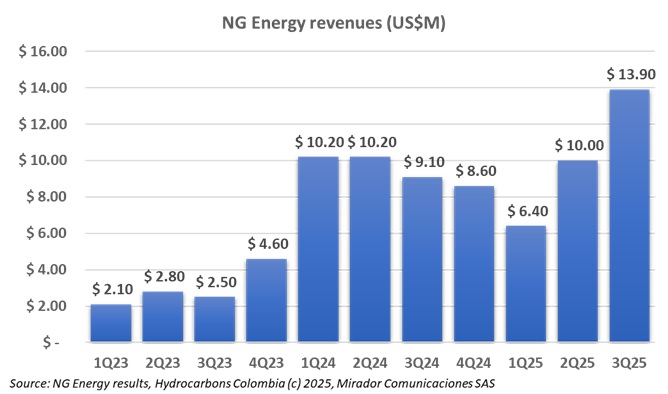
Fast growing gas producer NG Energy reported its 3Q25 financial results in a press release.
Colombia’s ongoing fiscal crisis is expected to worsen in 2026 due to a sharp drop in the profits of Ecopetrol, the nation’s most important company. The urgency for cash is so significant that the current administration has introduced a third tax reform bill to Congress.
Gases del Caribe, a major player in Colombia’s energy sector, has been recognized in the Digital Transformation category of the 2025 Portafolio Awards for its innovative platform called Helious. This proprietary technology was developed to fundamentally transform the management of natural gas supply and transportation across the country.
The import of fuels in Colombia has increased nearly tenfold in the last decade, according to an alert issued by the Comptroller General, Carlos Hernán Rodríguez.

Fitch Ratings issued a stark warning for Colombia’s oil and gas sector: the country’s proven reserves now have a useful life of less than seven years, a decline that has accelerated since 2021.
Colombia’s energy sector is once again warning that the country’s heavy tax load is eroding competitiveness and slowing investment.